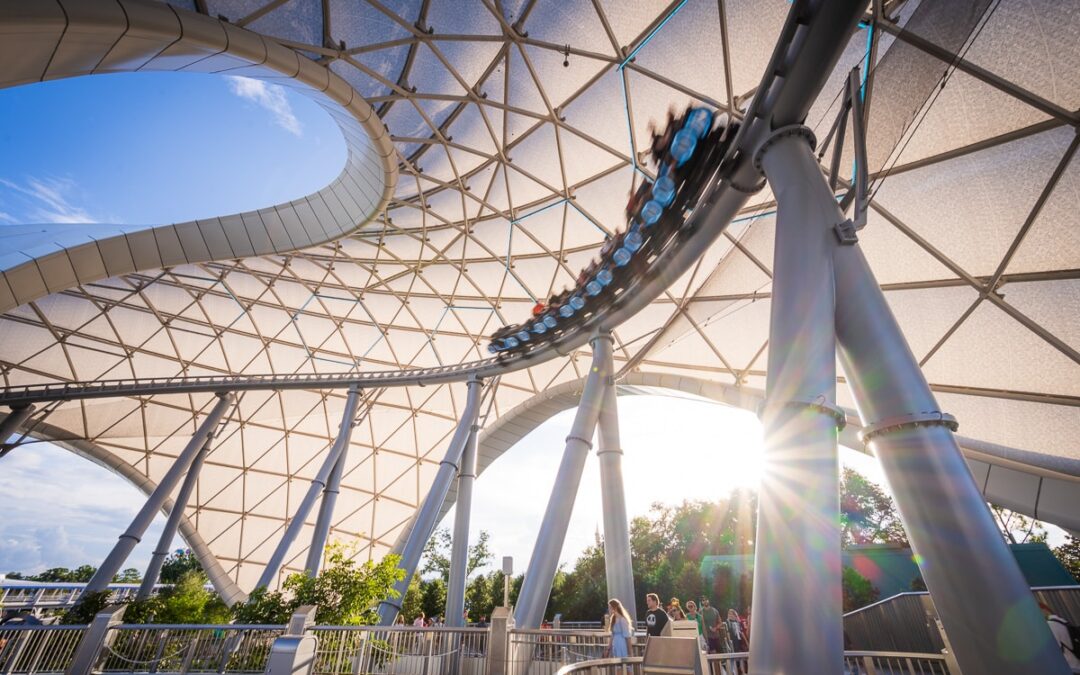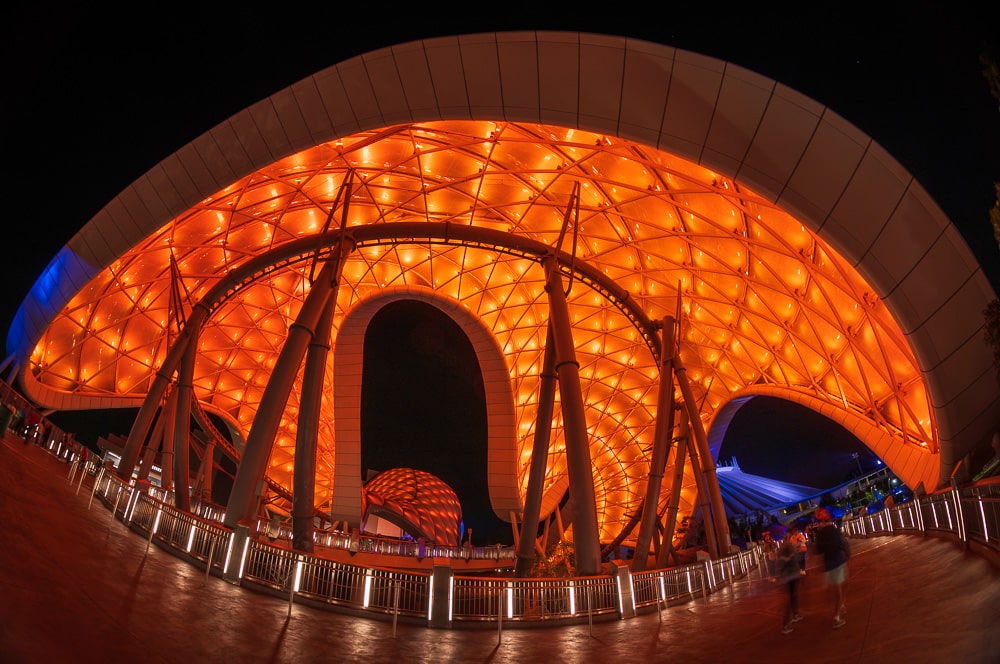

Lightning Lane Single Pass is the pay-per-ride line-skipping access to the most popular rides at Magic Kingdom, Epcot, Hollywood, and Animal Kingdom. This guide covers pricing, when reservations sell out, which LLSPs to book or skip, and differences from the Multi-Pass service. Plus, the best ones to buy–and why we don’t recommend others. (Updated February 26, 2025.)
The first thing you need to know is that Lightning Lane Single Pass (LLSP) attractions are not included in the Lightning Lane Multi-Pass (LLMP) service. That line-skipping service offers Lightning Lane access for multiple attractions, hence the name. With LLMP, you can pre-book 3 ride reservations per day, and how many you get total depends upon crowds and how efficient you are at making the rolling ride reservations after entering the park.
That’s the upside to LLMP. The downside is that it excludes the most popular ride (or two) per park. Lightning Lane Multi Pass now uses per-park and date-based pricing, meaning it can cost as little as $15 or as much as $39 per person, per day. We generally prefer LLMP if you’re only going to buy one of the two add-ons, and recommend reading our Guide to Lightning Lane Multi Pass at Walt Disney World in addition to this.
Previously, Lightning Lane Single Pass was known as Individual Lightning Lanes or ILL or a la carte Lightning Lanes; Disney never had clear language. In any case, what was once Individual Lightning Lanes/ILL are now Lightning Lane Single Pass/LLSP. This name change came with a substantive change, which is a shift from same-day ride reservations to pre-arrival bookings. Guests can now book Lightning Lanes in advance, with 3-day or 7-day (plus) windows depending upon whether they’re staying off-site or on-site.
That’s the biggest change for both systems, and that has had a huge impact on Lightning Lane inventory and how quickly attractions book up. This is something we address at length in Lightning Lane Single Pass is Selling Out Fast! The title there really says it all, but suffice to say, several of these LLSPs are now fully booked up in advance or have limited same-day availability.
In our view, LLSPs selling out more frequently boils down to the FOMO/FUD factor, the ease of adding them on during the booking flow, and Walt Disney World likely throttling availability to some degree. That last point is very important, as they’ve achieved better balance with standby lines now flowing more fluidity, and wait times usually being lower for these attractions. Generally speaking, this means that Lightning Lane Single Pass is not as “valuable” as before since it typically will not save you as much time.
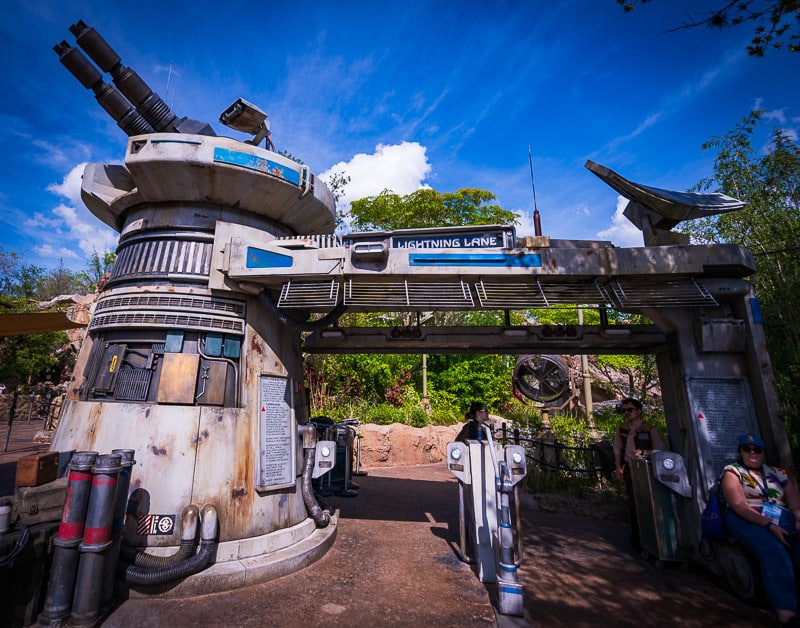

In terms of basics, the most popular ride in each park (or two rides, in the case of Magic Kingdom) sells Lightning Lanes Single Pass. Most other popular attractions (and plenty of unpopular ones) are included instead in the Lightning Lane Multi Pass bundle. For three of the four parks, the ability to book LLMPs is further restricted by tiers: you get one selection from the popular rides, and two from the less popular ones.
If you’re not a seasoned Walt Disney World veteran, that could be confusing. In a nutshell, Lightning Lanes are the physical infrastructure in the parks–a literal line you walk through in the queue that bypasses standby. However, there are two different ways to access this “fast lane.” For the majority of rides, you make selections via the LLMP service, which gives you a return time for Lightning Lane access. For the most popular attractions in each park, you purchase separate LLSP access.
Here’s the list of Lightning Lane Single Pass attractions at Walt Disney World:
- Seven Dwarfs Mine Train (Magic Kingdom)
- TRON Lightcycle Run (Magic Kingdom)
- Guardians of the Galaxy Cosmic Rewind (EPCOT)
- Star Wars Rise of the Resistance (Disney’s Hollywood Studios)
- Avatar Flight of Passage (Disney’s Animal Kingdom)
If you’re wondering why Magic Kingdom has two LLSPs, the simple explanation is that Seven Dwarfs Mine Train is a family-friendly or “kiddie” coaster whereas TRON Lightcycle Run is aimed at adults and is more niche–the demographics differ. The more complicated explanation revolves around revenue maximization and added capacity that the other parks lack.


Next, let’s take a look at Lightning Lane Single Pass pricing. Walt Disney World previously announced that prices will vary depending on the attraction and day of visit. Think of it like Express Lanes on highways—dynamic pricing that increases with demand.
Prices have exploded for Lightning Lane Multi-Pass with the introduction of date-based and then per-park pricing, taking the cost from $15 every single day for every single park to significantly higher amounts. Under the new pricing scheme, the average price of LLMP has been $25 for Magic Kingdom. The highest price it has reached thus far has been $39, with the lowest price being $15. (All numbers are pre-tax prices; after tax the range is ~$16 to ~$42.)
That’s the bad news. The good news is that even though prices have gone up for certain Lightning Lane Single Pass attractions, they are not up nearly that much. In fact, some haven’t increased at all in the last year.
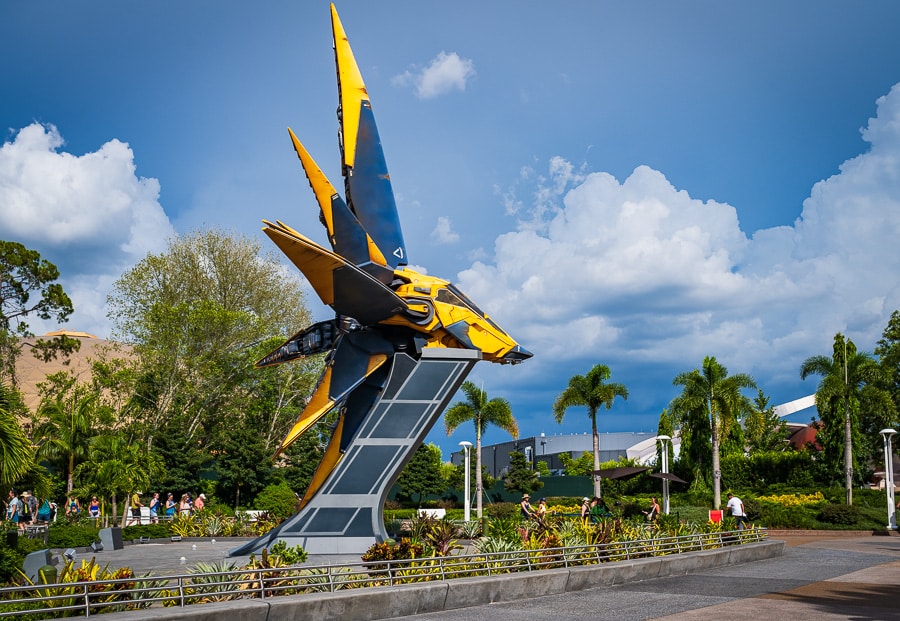

Here’s a look at high and low price points we’ve seen so far post-price increase:
- Seven Dwarfs Mine Train: high $14, low $10
- TRON Lightcycle Run: high $22, low $19
- Guardians of the Galaxy Cosmic Rewind: high $19, low $14
- Star Wars Rise of the Resistance: high $25, low $15
- Avatar Flight of Passage: high $18, low $11
Since the start of the new fiscal year, the high prices of all Lightning Lane Single Passes have increased and there have been fewer of the low prices. Thus far in 2025, none of these attractions have hit the lows listed above, and most have been at least a few dollars above those baselines in the middle of the range.
Although winter is no longer off-season, there have been relatively low-crowd dates. We may not know whether the low prices have been reset until August and September 2025, but our suspicion is that they have. Accordingly, you can expect to pay prices closer to the highs if you’re visiting on most dates this year. If you’re visiting during school breaks and holidays, expect to pay the highs. Lightning Lane Single Pass has been selling out regardless, so Walt Disney World has little incentive to charge less.
As for future changes, it’s possible that Single Pass prices will hit new highs in 2025 during Thanksgiving, Christmas, and New Year’s Eve. Walt Disney World typically raises prices around the new fiscal year in October.
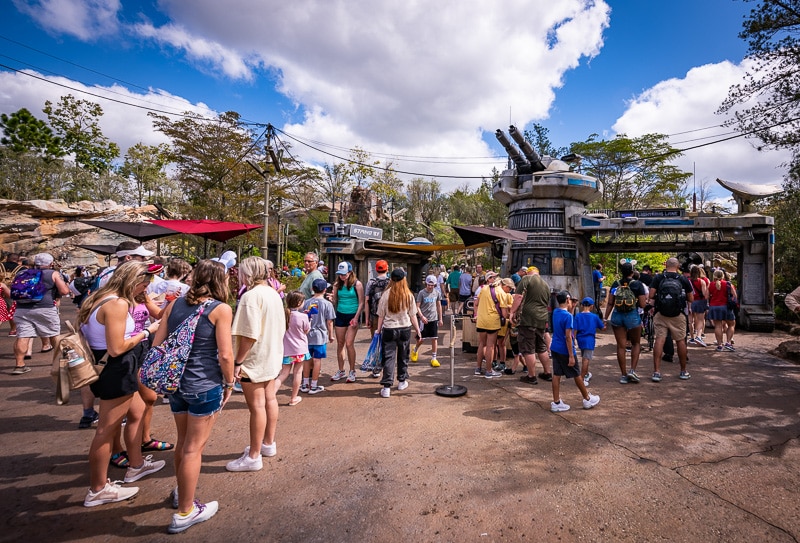

With date-based pricing, Walt Disney World is more willing to adjust prices with regularity, especially around the aforementioned holidays when demand is much higher. As we’ve seen over the course of the last year, Lightning Lane Single Pass sell out faster–even at higher prices–when crowds and wait times are worse.
Which makes complete sense: even if it costs more, there’s more value in skipping a longer line. In other words, current demand already suggests that the prices could likely go up significantly. However, with pent-up demand exhausting itself, prices may now start to trend downward instead of up for the rest of this year.
That brings us to our next topic: Lightning Lane Single Pass availability or lack thereof–what’s selling out and what’s readily available. Note that this is based on our experiences from thus far in 2025. Lightning Lane Single Pass is selling out much faster on many dates this year, even non-peak ones, than did its predecessor.


Part of this is to be expected. Instead of everyone booking same-day, and thus it taking longer for Lightning Lanes to sell out over the course of that one day, Single Passes can now be booked as many as 21 days in advance. As such, this could mostly be viewed as a straightforward story of pulling forward demand. Instead of booking up over the course of hours on the day-of, they’re booking up over the course of days ahead of time.
This is undoubtedly the biggest factor at play, and we’d expect this to be true going forward as a result. Lightning Lane Single Pass is selling out ahead of time because you can book it ahead of time. No big mystery and probably no further explanation needed–this angle is fairly self-explanatory and simple stuff.
But it’s also worth noting that some attractions that previously weren’t selling out at all are now often difficult to score. Seven Dwarfs Mine Train is the prime example. Even during the off-season, it’s been more difficult to book. We believe this is a result of Disney throttling LLSP for the initial launch period plus people being more likely to add-on LLSP during their booking flow. When booking in advance, there’s also more uncertainty–you can’t see current wait times to make a decision about whether you’re fine with standby. In any case, the Lightning Lane Single Pass system is still fairly new, so we’ll be monitoring and providing updates on it over the holiday season and into 2025.
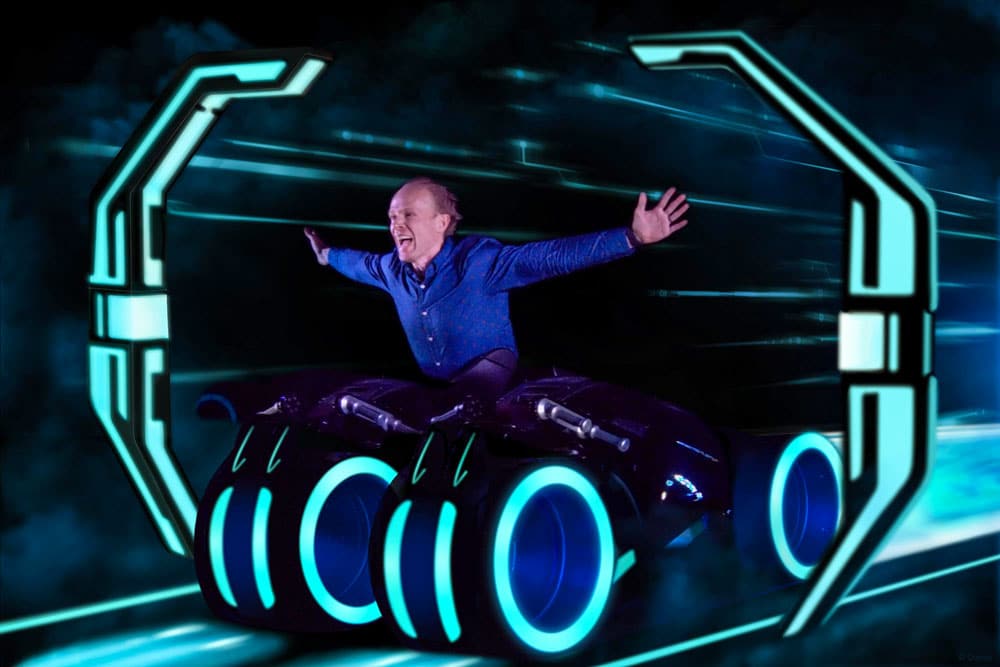

For now, let’s start with demand for the newest Lightning Lane Single Pass attraction: TRON Lightcycle Run. For the first year after opening, the Lightning Lane Single Pass for TRON Lightcycle Run was priced at $20 per person regardless of date. Since then, it’s been a range of $19 to $22, with most dates being $20 or $21. This is effectively a price increase–very few dates are $19.
This puts it higher than Guardians of the Galaxy: Cosmic Rewind, but behind Star Wars: Rise of the Resistance on average. It is also higher than its counterpart in Magic Kingdom, Seven Dwarfs Mine Train. That family-friendly coaster has retained its LLSP status even following the opening of Tiana’s Bayou Adventure (which is part of Lightning Lane Multi Pass).
For now, TRON Lightcycle usually has no same-day Lightning Lane Single Pass availability, limited availability (not all time slots) for 2-3 days in advance, and full availability beyond the 3 day mark. During busier timeframes, TRON has no availability 2-3 days in advance and limited options beyond that. We’ve seen it sold out for 6 days into the future at various points.


As noted above, Seven Dwarfs Mine Train was not ‘downgraded’ to Lightning Lane Multi Pass when TRON Lightcycle Run or Tiana’s Bayou Adventure opened. Seven Dwarfs Mine Train is the oldest attraction with LLSP status, and Magic Kingdom is the only park with two LLSP rides.
However, Seven Dwarfs Mine Train is still incredibly popular and with an entirely different demographic than TRON Lightcycle Run. On top of that, Magic Kingdom already has nearly two-dozen Lightning Lane Multi Pass attractions, which is more than any other park. Consequently, Disney is maintaining its LLSP status in order to capture more revenue since more LLMP capacity is not needed.
Interestingly, Seven Dwarfs Mine Train went from being the least popular Individual Lightning Lane at Walt Disney World to one of the most popular Lightning Lane Single Passes! SDMT typically has no same-day or day-in-advance Lightning Lane Single Pass availability, limited availability (not all time slots) for 3-5 days in advance, and full availability beyond the 7 day mark. It’s even worse during busier weeks, when SDMT can be sold out 6+ days in advance.
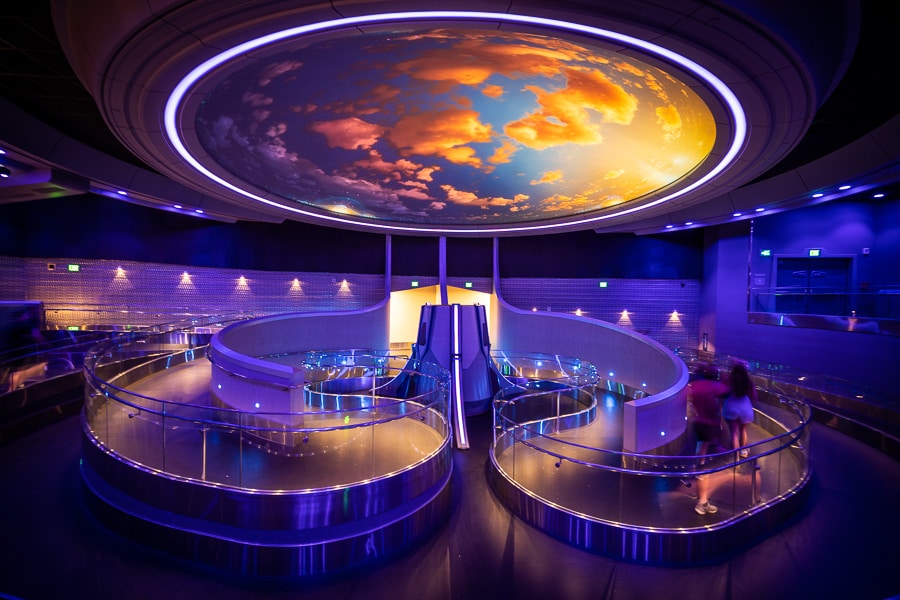

Over at EPCOT, Guardians of the Galaxy: Cosmic Rewind is also more popular as a Lightning Lane Single Pass.
With that said, Cosmic Rewind just switched from a virtual queue to a standby line, and it’s unclear whether this will impact LLSP sales. From what we saw with TRON Lightcycle Run, there shouldn’t be much of a change.
If you’re an on-site guest, we do not recommend purchasing Lightning Lane Single Pass access to Guardians of the Galaxy: Cosmic Rewind if you’re visiting on low or moderately crowded days. You should be able to hit Cosmic Rewind during Early Entry and again during Extended Evening Hours if you’re eligible. On lower crowd days, you could probably do the attraction more than once with manageable waits. (See our Walt Disney World Crowd Calendars for insight as to how busy it’ll be when you’re visiting.)
Notably, this roller coaster does have re-rideability thanks to Cosmic Rewind’s six different songs. Same goes with TRON Lightcycle Run given how different it looks and feels at night. Of the two, we’d be more inclined to pay extra for multiple rides on Cosmic Rewind, as it’s a longer and more satisfying attraction with bigger differences thanks to the soundtrack changes, but to each their own.
Guardians of the Galaxy: Cosmic Rewind usually has no same-day Lightning Lane Single Pass availability, limited or no availability for 2-5 days in advance, and full availability beyond the 7-day mark. As with the other attractions, this worsens with crowds.
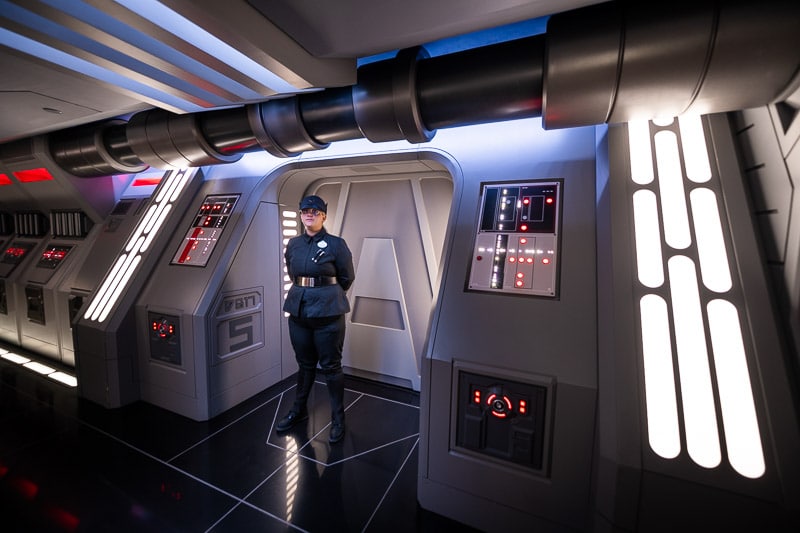

Disney’s Hollywood Studios is home to the best-seller: Star Wars Rise of the Resistance.
Star Wars: Rise of the Resistance almost always has no same-day Lightning Lane Single Pass availability. Sometimes, it has no availability for a full week out, even in only moderate crowds. Other times, it has limited availability for 5-9 days in advance. It usually only has full availability once you get beyond the 10-day mark, meaning that the on-site advantage is truly necessary for full access to all of its time slots.
To compound matters on busier days, DHS is also home to the unequivocally most popular Lightning Lane Multi Pass attraction: Slinky Dog Dash. If you’re only going to buy LLSP or LLMP at DHS, we highly recommend the latter. Slinky Dog Dash alone is more popular via standby than Rise of the Resistance. The other 2+ Lightning Lanes are gravy–and pretty good gravy, at that!
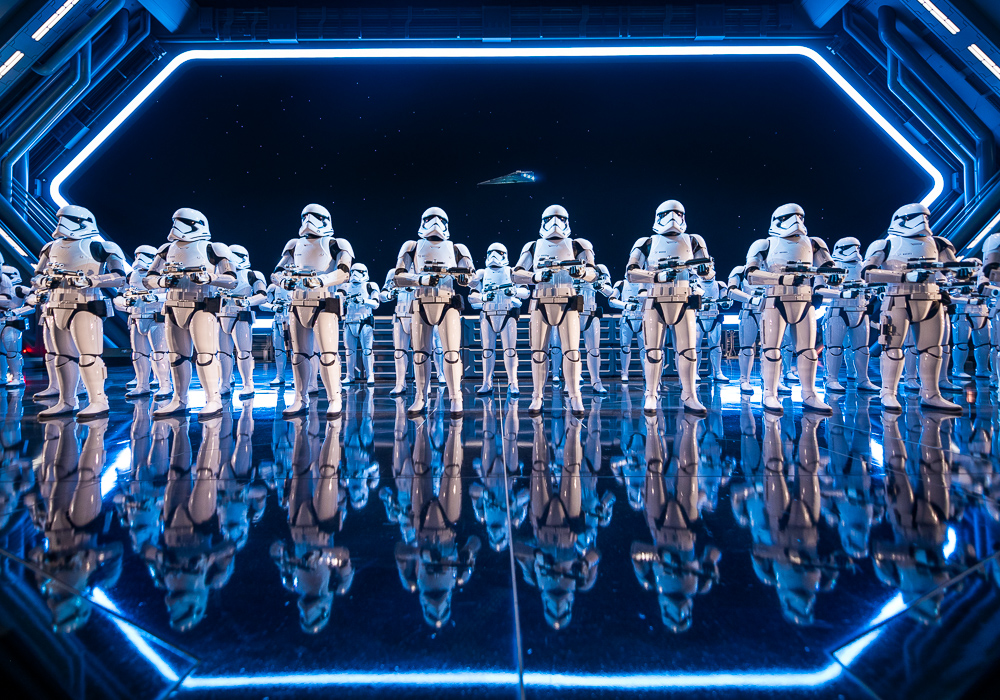

With that said, there are some things to know about Star Wars: Rise of the Resistance. First, we think it’s the best attraction of all at Walt Disney World. You should not skip this attraction–even if you aren’t a Star Wars fan, there’s a good chance you’ll love it.
Most importantly, Star Wars: Rise of the Resistance is an unreliable attraction, with breakdowns occurring daily. If you jump into a multi-hour standby line, there’s moderate probability of downtime while you’re waiting. That not only means you’ll potentially be stuck in the same spot for an hour or so, but also that when Star Wars: Rise of the Resistance returns from downtime, it’ll have a backlog of Lightning Lane guests–who are prioritized–to process before the standby line.
For this reason alone, we recommend Star Wars: Rise of the Resistance during Early Entry, at the end of the night, or via the Lightning Lane. The risk and potential for wasted time via standby during the middle of the day is simply too high. It’s not an overstatement or exaggeration to say that a negative standby experience with Star Wars: Rise of the Resistance could ruin your day.
Another alternative is waiting for a refill of the Lightning Lane Single Pass for Star Wars: Rise of the Resistance. See Ride Reservation Refill Rules at Walt Disney World for timing on when these typically occur.
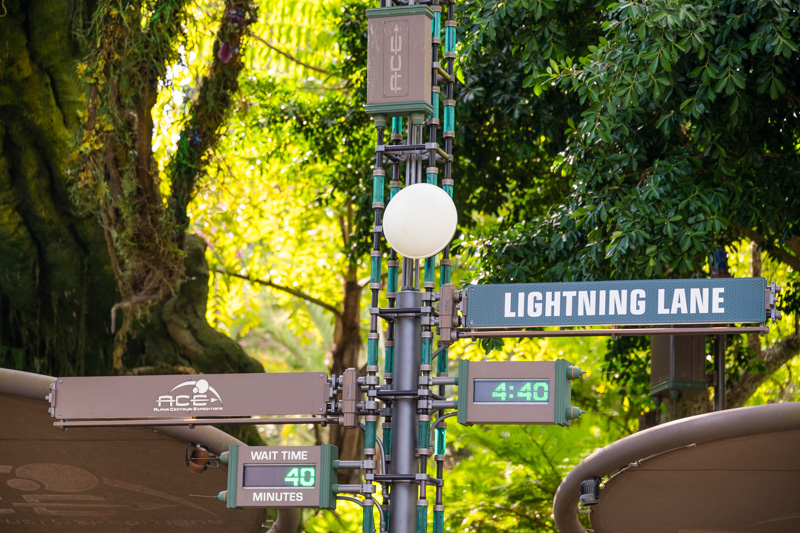

Animal Kingdom is where you’ll find one of Walt Disney World’s most popular attractions: Avatar Flight of Passage.
However, it’s also relatively easy to experience Avatar Flight of Passage without a lengthy wait. Either arrive for Early Entry and do it first, or show up late and do it during the last hour of the evening. We’ve done both approaches many times, and often have an actual wait time of under 30 minutes, regardless of the posted wait time.
Lightning Lane Single Pass is almost always sold out same-day for Avatar Flight of Passage, and is sometimes unavailable (or at least limited) for 2-3 days in advance. Once you’re at least 4 days out, it usually has at least some time slots still available.
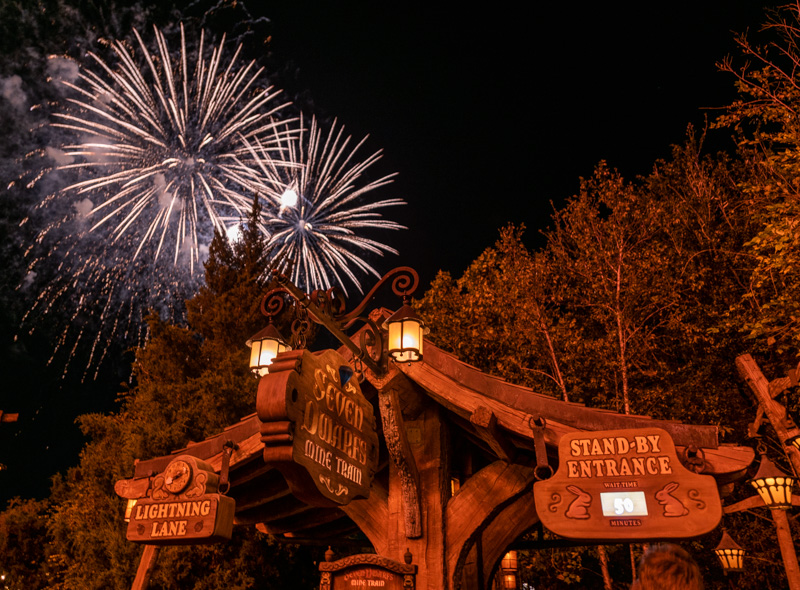

To be entirely honest, we’ve never bought Lightning Lane Single Pass and have no intentions of doing so.
No offense to those who plan on buying these–to each their own–but it’s simply a line we’re not willing to cross, so to speak. While we use Lightning Lane Multi Pass frequently, that’s bundled access for multiple attractions that makes the whole day easier. This is different, as it means putting a price on a single attraction–all of which we have done many, many times over the years.
Beyond that, us buying Lightning Lane Single Pass access is not necessary “for the sake of research,” whereas testing and using LLMP very much is. Since there’s currently only one or two LLSP rides per park, it’s pretty easy to rope drop one and do the other right before park closing and bypass the lines that way.
If anything, thinking up, trying, and testing other savvy strategy to bypass long waits at Lightning Lane Single Pass attractions is a “fun” challenge. That’s more important to us than getting to skip the lines ourselves! We recommend a similar approach to most vacation planners who are on a tighter budget. For the reasons outlined above, Lightning Lane Single Pass can be a good use of money that minimizes headaches and saves a ton of time–it all depends upon your budget, how much time you have, and whether any of these rides are must-dos…or must-repeats!
Planning a Walt Disney World trip? Learn about hotels on our Walt Disney World Hotels Reviews page. For where to eat, read our Walt Disney World Restaurant Reviews. To save money on tickets or determine which type to buy, read our Tips for Saving Money on Walt Disney World Tickets post. Our What to Pack for Disney Trips post takes a unique look at clever items to take. For what to do and when to do it, our Walt Disney World Ride Guides will help. For comprehensive advice, the best place to start is our Walt Disney World Trip Planning Guide for everything you need to know!
YOUR THOUGHTS
What do you think of the pay-per-ride Lightning Lane Single Pass ride reservations? Planning on using this to skip standby lines, or do you prefer not to pay even more for an already expensive Walt Disney World vacation? Are you more likely to purchase LLMP or LLSP–or neither? Do you agree or disagree with our advice and assessment? Any questions we can help you answer? Hearing your feedback–even when you disagree with us–is both interesting to us and helpful to other readers, so please share your thoughts below in the comments!

